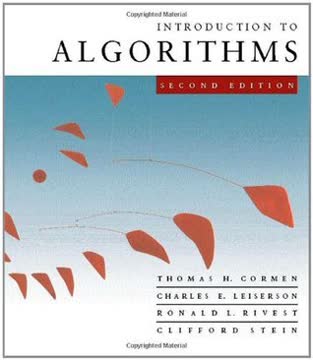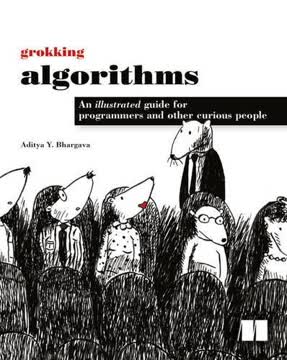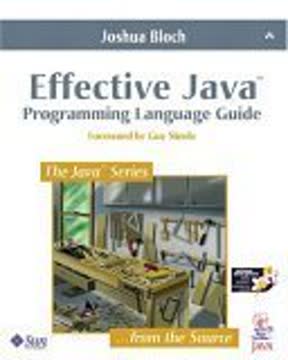Key Takeaways
1. JavaScript's Good Parts: Embrace Simplicity and Power
JavaScript contains a large set of weak or problematic features that can undermine our attempts to write good programs. We should obviously avoid JavaScript's worst features.
Embrace the good, avoid the bad. JavaScript, despite its flaws, has a beautiful and powerful core. By focusing on its good parts, developers can create robust, efficient, and maintainable code. The language's flexibility allows for expressive and concise programming, but it also requires discipline to avoid its pitfalls.
Key good parts include:
- Functions as first-class objects
- Loose typing
- Dynamic objects
- Expressive object literal notation
Avoid problematic features such as:
- Global variables
- Implicit type coercion
- The with statement
- eval function
By carefully selecting which features to use, developers can harness JavaScript's power while minimizing risks and complexity.
2. Functions as First-Class Objects: The Heart of JavaScript
JavaScript's functions are first class objects with (mostly) lexical scoping. JavaScript is the first lambda language to go mainstream.
Functions are versatile and powerful. In JavaScript, functions are not just subroutines but full-fledged objects. This allows for incredible flexibility and expressiveness in programming. Functions can be assigned to variables, passed as arguments, returned from other functions, and even have properties and methods.
Key aspects of JavaScript functions:
- Lexical scoping (closures)
- Can be used to create modules
- Support for functional programming patterns
- Ability to create methods for objects
This feature enables powerful programming paradigms such as functional programming, object-oriented programming, and modular design. Mastering the use of functions is crucial for writing efficient and elegant JavaScript code.
3. Objects and Prototypes: Flexible and Efficient Inheritance
JavaScript has a class-free object system in which objects inherit properties directly from other objects. This is really powerful, but it is unfamiliar to classically trained programmers.
Prototypal inheritance is unique and powerful. JavaScript's object system is fundamentally different from class-based languages. Instead of classes, it uses prototypes for inheritance. This allows for more flexible and dynamic object relationships.
Key aspects of JavaScript's object system:
- Objects can inherit directly from other objects
- Dynamic addition of properties and methods
- No need for class definitions
- Efficient memory usage through prototype chain
While initially confusing for developers from class-based languages, embracing prototypal inheritance can lead to more flexible and efficient code. It allows for easy object creation, dynamic modification, and powerful patterns like object composition and delegation.
4. Avoid Global Variables: Enhance Code Quality and Security
The worst of all of JavaScript's bad features is its dependence on global variables.
Global variables are a major pitfall. The use of global variables in JavaScript can lead to numerous problems, including naming conflicts, security vulnerabilities, and difficulty in maintaining and debugging code. They make it challenging to create modular and reusable code.
Strategies to minimize global variables:
- Use the module pattern
- Employ closures to create private scopes
- Utilize IIFE (Immediately Invoked Function Expressions)
- Namespace your application under a single global object
By reducing the use of global variables, developers can create more robust, maintainable, and secure JavaScript applications. This practice also improves code organization and reduces the risk of unintended interactions between different parts of the program.
5. Understand and Leverage Closure for Powerful Programming
Functions in JavaScript form closures. A closure is the internal function plus the access to all the variables in external scopes.
Closures enable powerful patterns. Closure is a fundamental concept in JavaScript that allows functions to retain access to variables from their outer scope even after the outer function has returned. This enables powerful programming patterns and is key to many JavaScript design patterns.
Applications of closures:
- Creating private variables and methods
- Implementing the module pattern
- Managing callbacks and asynchronous code
- Creating function factories
Understanding and leveraging closures allows developers to write more efficient, secure, and modular code. It's a key concept for advanced JavaScript programming and is essential for creating sophisticated applications.
6. Embrace JSON for Data Interchange and Portability
JSON is a lightweight data interchange format. It is based on JavaScript's object literal notation, one of JavaScript's best parts.
JSON simplifies data exchange. JSON (JavaScript Object Notation) has become a standard for data interchange due to its simplicity, readability, and ease of use. It's language-independent but particularly well-suited for JavaScript applications.
Key benefits of JSON:
- Lightweight and easy to read/write
- Language-independent
- Easy to parse and generate
- Supports complex data structures
By using JSON for data interchange, developers can simplify communication between different parts of an application or between different systems. It's particularly useful in web applications for client-server communication and for storing configuration data.
7. Use JSLint to Enforce Best Practices and Catch Errors
JSLint is a JavaScript syntax checker and verifier. It takes a source text and scans it. If it finds a problem, it returns a message describing the problem and an approximate location within the source.
JSLint improves code quality. Using tools like JSLint can significantly improve the quality and consistency of JavaScript code. It helps enforce best practices, catch potential errors early, and maintain a high standard of code across a project or team.
Benefits of using JSLint:
- Catches common programming errors
- Enforces coding standards
- Improves code readability and maintainability
- Helps learn and adopt best practices
By integrating JSLint into the development process, teams can catch and fix issues early, leading to more robust and maintainable code. It's particularly valuable for large projects or teams where consistency is crucial.
8. Beware of JavaScript's Bad Parts: Navigate Pitfalls Wisely
JavaScript has lots of additional features that really don't add very much, and as you'll find in the appendixes that follow, it has a lot of features with negative value.
Avoid problematic features. While JavaScript has many powerful features, it also includes several problematic ones that can lead to bugs, security issues, or hard-to-maintain code. Knowing and avoiding these "bad parts" is crucial for writing robust JavaScript applications.
Key bad parts to avoid:
- The with statement
- eval function
- Automatic semicolon insertion
- typeof operator inconsistencies
- == and != operators (use === and !== instead)
By being aware of these pitfalls and consciously avoiding them, developers can write cleaner, more reliable, and more maintainable JavaScript code. It's often better to use well-understood alternatives or workarounds for these problematic features.
Last updated:
FAQ
What's "JavaScript: The Good Parts" about?
- Focus on JavaScript's strengths: The book highlights the most effective and efficient parts of JavaScript, aiming to help programmers use the language to its fullest potential.
- Target audience: It is intended for programmers who are either new to JavaScript or have been using it at a novice level and are ready to deepen their understanding.
- Not a beginner's guide: The book is not a comprehensive reference or a beginner's guide; it focuses on the essential parts of JavaScript that are most beneficial.
- Exclusion of bad parts: It deliberately excludes the problematic features of JavaScript to promote better programming practices.
Why should I read "JavaScript: The Good Parts"?
- Improve JavaScript skills: It helps programmers refine their skills by focusing on the most powerful and reliable features of JavaScript.
- Avoid common pitfalls: By highlighting the good parts, the book helps readers avoid the language's quirks and pitfalls.
- Enhance code quality: The book encourages writing cleaner, more maintainable, and more efficient code.
- Gain deeper insights: It provides insights into JavaScript's design and how to leverage its strengths effectively.
What are the key takeaways of "JavaScript: The Good Parts"?
- Embrace JavaScript's strengths: Focus on using JavaScript's functions, loose typing, and dynamic objects effectively.
- Avoid bad parts: Learn to identify and avoid JavaScript's problematic features, such as global variables and certain operators.
- Use of closures and prototypes: Understand and utilize closures and prototypal inheritance to write more expressive and powerful code.
- Adopt a disciplined style: Follow the book's style recommendations to write clear and consistent JavaScript code.
What are the best quotes from "JavaScript: The Good Parts" and what do they mean?
- "JavaScript is a language with more than its share of bad parts." This highlights the importance of being selective about which features to use.
- "JavaScript is a block of marble, and I chip away the features that are not beautiful until the language's true nature reveals itself." This metaphor emphasizes the book's approach of focusing on the language's strengths.
- "The good parts are good enough to compensate for the bad parts." This reassures readers that by focusing on the good parts, they can still achieve great results with JavaScript.
- "JavaScript is Lisp in C's clothing." This suggests that JavaScript's true power lies in its functional programming capabilities, similar to Lisp.
How does "JavaScript: The Good Parts" define the good parts of JavaScript?
- Functions as first-class objects: JavaScript treats functions as first-class citizens, allowing them to be passed around and manipulated like any other object.
- Dynamic objects with prototypal inheritance: JavaScript's objects are flexible and can inherit properties directly from other objects without the need for classes.
- Object and array literals: These provide a convenient and expressive way to create and manipulate data structures.
- Avoidance of bad parts: The book identifies and advises against using features that can lead to errors or poor code quality.
What are some of the bad parts of JavaScript according to "JavaScript: The Good Parts"?
- Global variables: They can lead to unpredictable behavior and are difficult to manage in large programs.
- Semicolon insertion: This can cause unexpected errors and should not be relied upon.
- Type coercion with == and !=: These operators can lead to confusing and unintended results due to automatic type conversion.
- The with statement: It can make code difficult to read and debug, and should be avoided.
How does "JavaScript: The Good Parts" suggest handling global variables?
- Minimize usage: The book advises minimizing the use of global variables to reduce complexity and potential conflicts.
- Single global variable: Create a single global variable to act as a namespace for your application, containing all other variables and functions.
- Use closures: Employ closures to encapsulate variables and functions, reducing reliance on global scope.
- Avoid implied globals: Always declare variables explicitly to prevent them from becoming global unintentionally.
What is the role of functions in "JavaScript: The Good Parts"?
- Modular unit: Functions are the fundamental modular unit in JavaScript, used for code reuse and information hiding.
- First-class objects: Functions can be stored in variables, passed as arguments, and returned from other functions.
- Closure: Functions can capture and remember the environment in which they were created, allowing for powerful programming patterns.
- Invocation patterns: The book discusses different ways to invoke functions, each with its own implications for the
thiskeyword.
How does "JavaScript: The Good Parts" explain prototypal inheritance?
- Class-free system: JavaScript uses a class-free object system where objects inherit directly from other objects.
- Prototype chain: Objects can delegate property access to their prototype, forming a chain that can be traversed for property lookup.
- Dynamic relationship: The prototype relationship is dynamic, meaning changes to a prototype are immediately reflected in all objects that inherit from it.
- Simplified inheritance: The book simplifies the process of creating objects with a specific prototype using a custom
Object.createmethod.
What style recommendations does "JavaScript: The Good Parts" provide?
- Consistent indentation: Use consistent indentation to improve code readability and structure.
- Use of blocks: Always use blocks with structured statements like
ifandwhileto prevent errors. - Avoid line breaks in expressions: Break lines after operators to avoid issues with semicolon insertion.
- Declare variables at the top: Declare all variables at the top of a function to avoid confusion due to JavaScript's lack of block scope.
How does "JavaScript: The Good Parts" suggest using JSON?
- Data interchange format: JSON is a lightweight format for exchanging data between programs, based on JavaScript's object literal notation.
- Use JSON.parse: Instead of
eval, useJSON.parseto safely parse JSON data and avoid security risks. - Avoid innerHTML with JSON: Be cautious when using JSON data with
innerHTMLto prevent script injection attacks. - Minimal and portable: JSON's design is minimal and portable, making it easy to implement and use across different programming languages.
What is JSLint and how is it related to "JavaScript: The Good Parts"?
- Code quality tool: JSLint is a tool that checks JavaScript code for potential problems and enforces a stricter subset of the language.
- Avoids bad parts: It helps programmers avoid JavaScript's bad parts by flagging problematic patterns and practices.
- Style enforcement: JSLint enforces the style recommendations from the book, promoting cleaner and more maintainable code.
- Global variable detection: It identifies undeclared variables to prevent accidental creation of global variables.
Review Summary
JavaScript: The Good Parts receives mixed reviews but is generally well-regarded. Readers appreciate its concise explanation of JavaScript's best features and its honest critique of the language's flaws. Many find it eye-opening and valuable for experienced programmers new to JavaScript. However, some criticize its organization, outdated information, and occasionally confusing explanations. The book's opinionated style and focus on best practices are praised by some but seen as overly dogmatic by others. Overall, it's considered an important read for serious JavaScript developers, despite its limitations.
Similar Books










Download PDF
Download EPUB
.epub digital book format is ideal for reading ebooks on phones, tablets, and e-readers.




